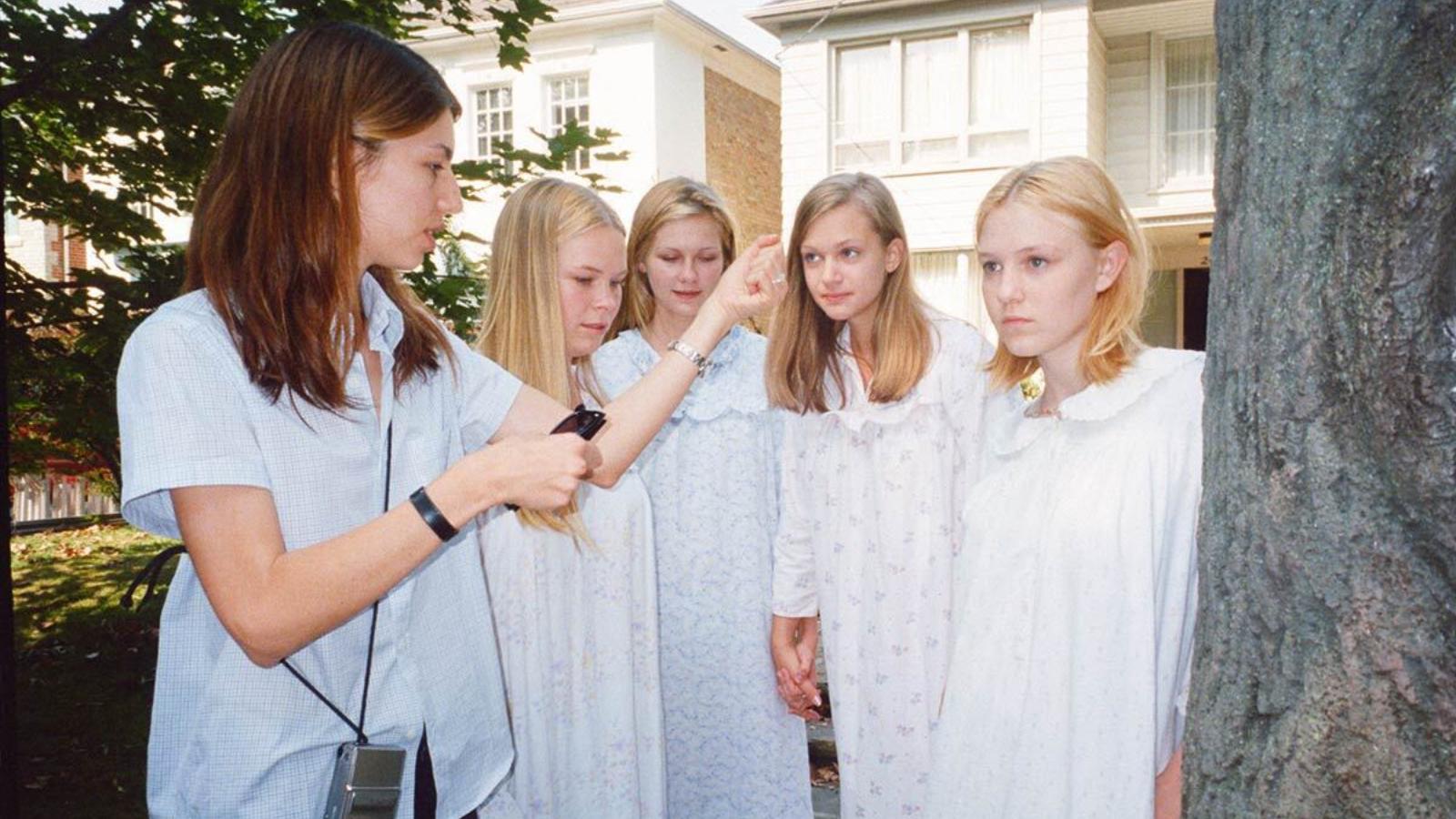Don't miss your future favorite film!
Subscribe to our newsletter and get the latest updates from the SIFF community delivered straight to your inbox.
Don't miss your future favorite film!
Subscribe to our newsletter and get the latest updates from the SIFF community delivered straight to your inbox.
Shelby Smout | Social Media Manager | Monday, September 25, 2023

Sofia Coppola’s The Virgin Suicides was released in what many refer to as the “Best Film Year Ever”–1999. It was our SIFF Movie Club selection for September, and I introduced the film at the Uptown the evening it screened. A colleague of mine had suggested I read a diary entry aloud (think “Mortified”), but though I’d always aspired to be someone who kept a diary, it just never stuck due to my young self-seriousness. However, in 2017, I wrote a review on Letterboxd for The Virgin Suicides and it ends with this short paragraph: “And I can’t bid thee farewell without drawing attention to Trip Fontaine’s wig. His Lord Farquaad-esque hairdo is where the idealism of youth resides.” Close enough to a diary entry.
Now, let’s veer away from my lack of diary-keeping prowess and push the pedal (petal is more fitting) to the metal to arrive at the film and its creator. Coming from a photography background, Coppola had previously made a short film called Lick the Star (1998) and, even before that, she had a short-lived tv show on Comedy Central Called “Hi Octane” (1994), in which she and her bestie, Zoe Cassevettes (yes, the progeny of John Cassavettes and Gena Rowlands), performed sketches and interviewed their famous friends, like Martin Scorsese, Naomi Campbell, and Coppola cousin Nicolas Cage.
Thurston Moore, of Sonic Youth fame, changed Sofia’s life forever when he recommended she read “The Virgin Suicides,” the debut novel of Jeffrey Eugenides. She instantly fell in love with the book and felt compelled to write a feature-length script. At the time, “The Virgin Suicides” novel had already been optioned and was in preproduction elsewhere, but she followed her heart and pressed on with the script. Even her parents, Eleanor and Francis Ford Coppola, couldn’t dissuade her from adapting a book she didn’t have the rights to.
Lady Luck was on Sofia’s side and the original production of The Virgin Suicides fell through. She sent her script in for consideration and, with the Coppola name most likely providing the opportunity, she received the greenlight for her adaptation.
The Virgin Suicides went into principal photography in 1998 and, in the behind-the-scenes shot by Eleanor Coppola, viewers can watch footage of Sofia’s friends and family assisting her on set, just happy to help her out. Francis Ford Coppola—whose production company American Zoetrope produced the film—is interviewed for the BTS, beaming with excitement as a proud father working the crafty table. Awe!
As previously mentioned, this film was released in 1999 and has had a lasting impact with its ethereal visuals and style. It truly solidified Sofia Coppola as a tastemaker for women and girls alike; as she made her mark in film, she has also become a fascinating figure in fashion. The dreamy aestheticism continues to capture the culture with collaborations with Heaven by Marc Jacobs and Uniqlo’s Celebrating Sofia Coppola collection. Even more recently, Sofia released her millennial pink book, “Archive”, boasting 488 pages of Sofia Coppola’s aptly named archives. Surely a balm for all of us jittering with anticipation for Priscilla.
I’ll end with a quote Sofia gave Criterion in 2018, the same quote that opens The Virgin Suicides section in “Sofia Coppola: Forever Young:” “I wanted to make something that was artful for girls.”
And she did just that.
Don't miss your future favorite film!
Subscribe to our newsletter and get the latest updates from the SIFF community delivered straight to your inbox.
Don't miss your future favorite film!
Subscribe to our newsletter and get the latest updates from the SIFF community delivered straight to your inbox.